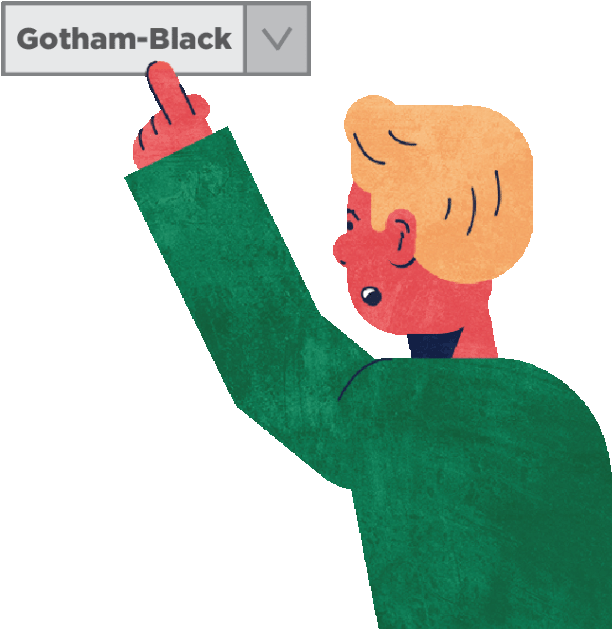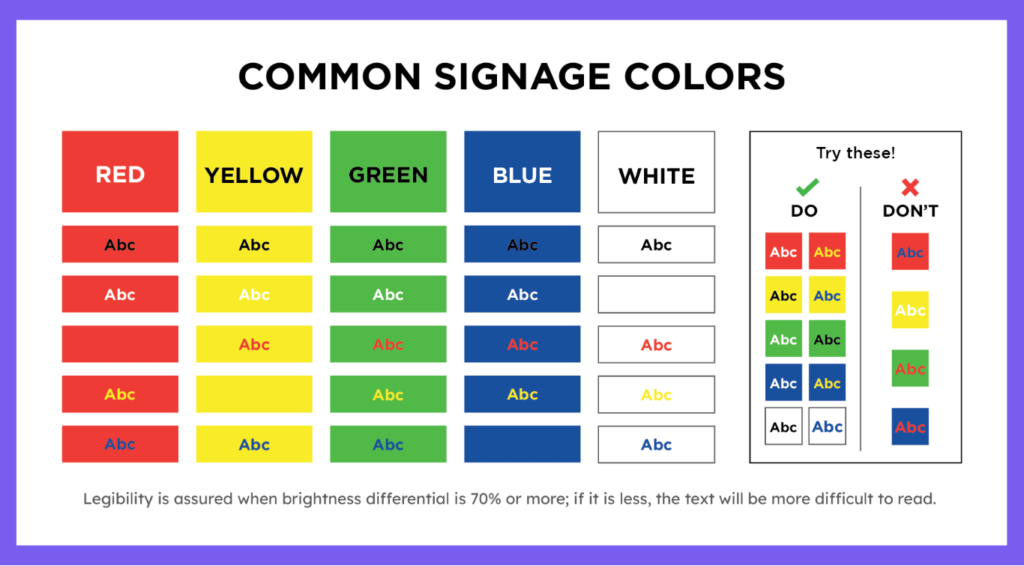


Accessibility is an important factor to consider when choosing fonts and colors as it ensures that everyone can access the content regardless of their ability. Unfortunately, there is no singular font that will fulfill everyone’s needs. However, there are specific features that can make a typeface more visually accessible.
It is important to note that legibility and readability are not synonymous. Legibility refers to how distinguishable the letters in a typeface are from one another in any given language; it is more commonly associated with the design of the typeface. Readability on the other hand refers to the typeset or arrangement of text which affects how easily and smoothly a person can read.
Choosing Typefaces
Accessible typography begins with choosing the right typeface. Unfortunately, there is no singular font that will fulfill everyone’s needs. However, there are specific features that can make a typeface more visually accessible.
For example, serif typefaces are traditionally the most accessible for long-form content, sans serifs are considered to be more legible especially for digital content as they are simpler and have cleaner letterforms.


Checking Legibility
As legibility refers to how distinguishable the letters in a typeface are from one another in any given language; it is more commonly associated with the design of the typeface. When it comes to typeface legibility, an important feature to take into account is its counters, or counterform.
Counters are the negative spaces within a letterform; they can be found in letters such as “o”, “d”, “c”, and “u”. Open letters can make it easy for your audience to differentiate between characters such as “c” and “e”.
Checking Readability
Readability on the other hand refers to the typeset or arrangement of text which affects how easily and smoothly a person can read. Which is why it is essential to consider ‘mirroring’ – what a character looks like when it’s flipped, in letters such as ‘b’ and ‘d’, ‘q’ and ‘p’, uppercase ‘i’ and lowercase ‘L’, or even uppercase ‘O’ and the number ‘0’. The subtlest differences in the structures of these characters can aid to better readability and legibility.
Small font sizes, italicized text and all uppercase text tend to be difficult for viewers with low vision.

Colors
Choosing the right color combinations is also very important. People, especially those with low vision, can find it difficult when there is not enough contrast between the text and its background. Contrast ratios represent how different one color is from another, it ranges from 1 to 21 based on its luminance. The contrast ratio between a text and its background should at least be 3:1 for large text, and 4.5:1 for small text.
A study made by Chen et al. (2020) showed that the combination of green and black is the most suitable color for safety signs compared with other color combinations.

Some of the most used background colors in signages are as follows.
- Red. Red is the color commonly associated with danger which is why it is used for signs that are vital for safety or to indicate that one should stop performing an action. Prohibition signs are also red, alongside stop signs, fire safety signs, as well as traffic lights.
- Yellow. Yellow is the first color the human eye notices. For that reason, it is primarily used in caution signs and is usually paired with black text. These signs often indicate danger that could lead to accidents or cause serious injury. It can commonly be seen used in wet floor signs or road signs.
- Green. Green is commonly used for safety signs, usually paired with white lettering. It is often seen being used for emergency escapes, first aid signs, to signify permitted movement, or that a route is safe to take. With that reason in mind, it is why traffic lights use green to indicate ‘go’.
- Blue. Blue is the color used in signages to convey mandatory instructions; they often aid individuals understand protocol that must be followed in certain workplaces like construction sites. Blue is also used in guide road signs.
Size and Spacing
The proper sizing and spacing of a body of text varies depending on what is to be achieved. Smaller font sizes, italicied text, and all uppercase text tend to be more difficult to read for people with low vision.
Leading, or the spaces between lines of text, can also affect readability. Line spacing that is too tight or too loose can make it difficult for readers to follow the text from line to line, and they may lose their place in the paragraph (Vision Australia).

Suggested Font Sizes
